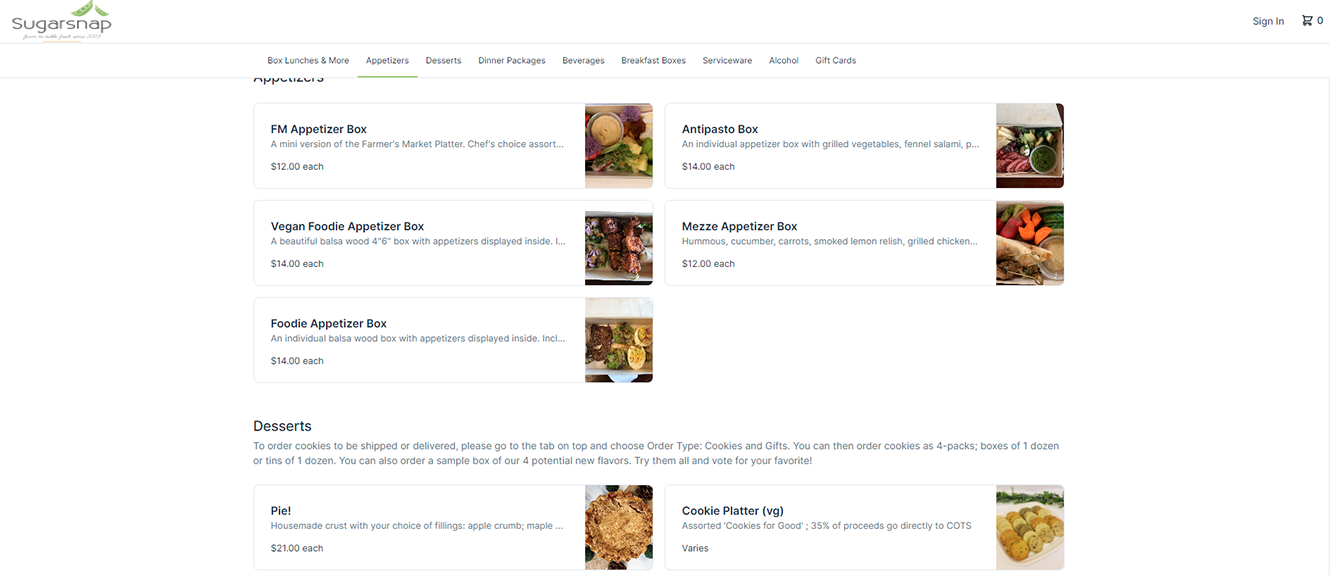In a recent episode of Restarting America with Josh Gibbs, Chef Jolie Oree Bailey, founder and Head Chef of Low Country Quisine, recounts how she called her mother to share her fears of not knowing what to do when the pandemic hit.
In truth, no one did.
Nobody could have predicted a global pandemic that would cripple activities in the catering industry. So much so, that roughly 36% of caterers closed and will never return, according to Roy Porter, a recognized catering and events expert. But as Robert H. Schuller’s best-selling book title says: “Tough times never last, but tough people do!”
And I couldn’t agree more.
That your catering business remains open even in the face of uncertainty shows you are tough. And now, as the world gradually reopens, the question is, what can you expect in this new normal?
To answer this, according to five industry experts, is going online and leveraging catering automation.
Let’s dive right in.
3 Things Drop-Off Caterers Can Expect In The New Normal
1. The Economy Will Bounce Back Stronger
We may still be in uncertain times, but one thing is certain: the economy will bounce back stronger. And as it does, expect the catering industry that was forecast to reach an estimated $12 billion in 2021 to be a massive part of it.
As such, only caterers who stand firm and take action will grab a market share.
Jennifer Perna, former VP of Sales at Blue Plate Catering and Senior Consultant at Fulton Market Consulting, agrees:
“The bright side to losing some of these caterers the pandemic swept away is it’s created an opportunity for new players to grab market share,” she says.
2. Digital Economy Will Drive the Most Opportunities
If you want to reach more customers in today’s digital-first world, you need to put your catering business where they can find you. And where’s that?
Online.
In other words, as the world bounces back, you need to start thinking about how to set up your catering business online. Or else, you’ll lose sales to your competitors or even worse, third-party sites like ezCater.
Frank Christian of Taylored Hospitality echoed the same thoughts:
“Buyers are now accustomed to the Amazon economy. There is no waiting around for services, and buyers like instant gratification. Specifically related to an online presence is you never know what sales would have been out there. And that’s it; we tell people that all the time,” he says. “If you don’t have a good online presence, you’re not able to direct folks either to your website or your online ordering, either indirectly or directly.”
3. Customers Buying Behavior Will Change
It’s no secret that lockdowns and social distancing caused by the pandemic impacted consumers’ buying behavior.
People had no choice but to buy necessities like groceries, food, and electronics online. And they realized how easy and convenient it is to sit comfortably at home, place orders online and have them delivered to your doorstep.
As the world bounces back, do you think people would revert to their old ways of visiting physical stores to purchase goods?
Absolutely not!
So, this means that relying on manual methods to manage and process catering orders in this new normal is no longer going to cut it. In other words, if you don’t adapt to this rapid consumer behavior change, you risk being out of business.
“I say this over and over again: Catering companies that run on Word and Excel without a repeatable process will have a costly retraining expense because you just cannot train over and over and over with the constant turnover that we have in the industry,” Christian says.

Now you may be wondering: How do you adapt to the changes in online ordering driving food buying behaviors? And how do you do it in the face of other challenges like rising food and labor costs?
The answer is two-fold:
1. Get your catering business online
To prepare for the new normal, the first thing you need to do is ensure you have an online presence.
“Let me start by being clear: It’s ALWAYS the perfect time to have an effective online presence,” says Aleya Harris, former catering company owner and award-winning marketer for caterers. “But, now more than ever, consumers are navigating an uncertain return to market from all sides. They’re not sure which businesses are open, which are only offering limited service (like curbside), or which have closed for good.
“If you don’t have an online presence right now, your past customers might assume your business didn’t make it through the pandemic. The rest of the market won’t even know you exist.”
Renowned International Speaker, Alan Berg, who is also an Expert on Business of Weddings & Events, says: “Having an effective online presence is a couple of things: First, it’s being found. This is your own website. If customers don’t find you online, you don’t exist. That’s it; you’re done. And if they do find you online and don’t like what they see, you’re also done.”
To put it simply, if your business isn’t online, it doesn’t exist. As such, to remain relevant and visible in the highly competitive catering industry, both new and existing customers should be able to find your catering business via your website or social media pages. Otherwise, to them, your business doesn’t exist.
What’s more, competing with thousands of catering businesses on third-party sites like ezCater to grab customers' attention is not an effective way to have an online presence or give your customers a great buying experience.
2. Using Catering Automation Software
Once people find your catering business through your website or social media page, they don’t want to go through the troubles of calling or emailing you to place orders. And that’s where Catering Automation Software comes in.
By automating your drop-off catering business, your customers can easily browse your online menu, place orders and make payments while adhering to your ordering policies.
“I anticipate that customers will continue to take advantage of virtual ways to engage with all businesses, particularly those in catering and food service,” Harris said. “For a market that is already heavily tech-dependent, there is a demand for convenience and instant gratification. Online ordering and curbside delivery are here to stay.”
Without a doubt, catering automation can save costs, streamline operations, increase productivity, and grow catering sales.
Want to learn more about how catering automation can help you generate more revenue for your drop-off catering business?



